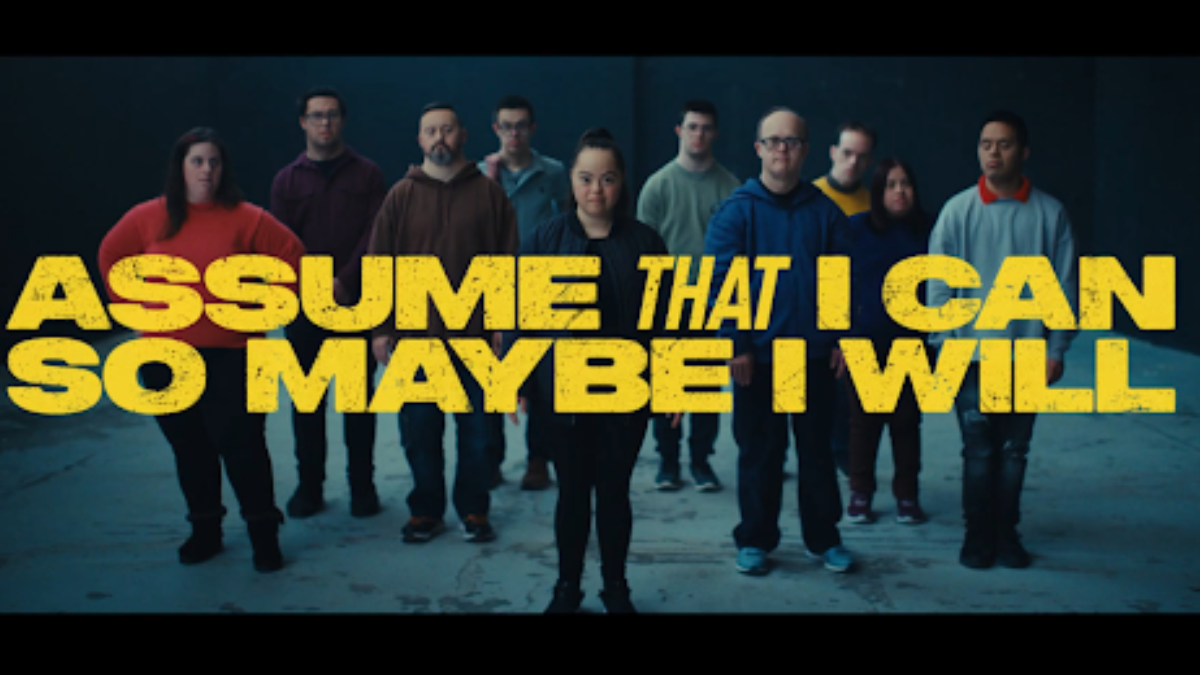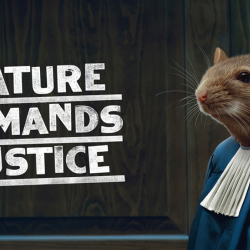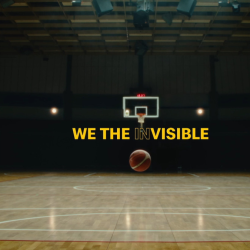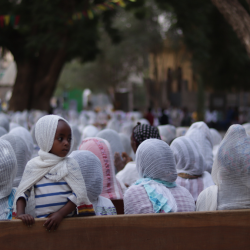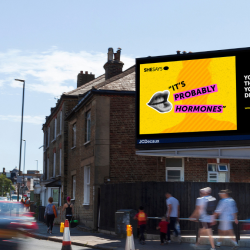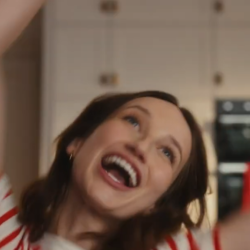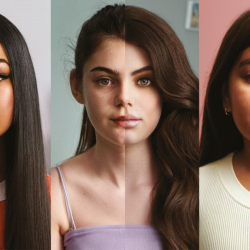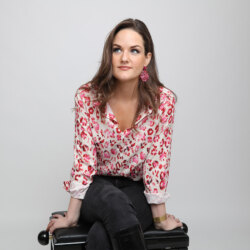It’s World Down Syndrome Day (21st March) and this year’s theme — ‘End the Stereotypes‘ couldn’t be clearer. CoorDown isn’t just echoing that message; they’re starting a global movement. The Italian non-profit teamed up with creative agency, SMALL, to launch #AssumeThatICan; an awareness campaign that highlights how assumptions about disabilities create barriers for people’s potential. The campaign struck a chord on social media, with millions of views on TikTok and Instagram, and praise from individuals with disabilities, advocates and organisations alike.
In this interview, Editor-at-large Natasha Randhawa goes behind-the-scenes with CoorDown’s VP and Head of Communications, Martina Fuga, and SMALL’s Co-Founder and Executive Creator Director, Luca Lorenzini.
Martina and Luca, great to have you with us. Let’s dive in. The campaign was inspired by Marta Sodano’s speech to the UN in 2019, in which she shared personal anecdotes on how assumptions around disabilities create a ‘self-fulfilling prophecy’ of unrealised opportunities. Martina, what specific goals did you want the brief to achieve in translating this message? Luca, how did these ideas evolve into the final execution?
Martina: We counted on raising awareness to change perspectives. Assumptions can be a big constraint, not only for people with disabilities, but for all of us. The goal here was to reframe those limitations in a positive way and reverse the paradigm: ‘Assume that I can, so maybe I will’.
Luca: Each year, we begin with a brainstorming session, where Martina always brings amazing insights. This year, the conversation landed on Marta Sodano’s speech, and we started really analysing how we could convey this ‘not so simple’ idea. We knew we didn’t want the typical sombre, sad PSA. We wanted something empowering, and were inspired by the energy in commercials from brands like Nike or Under Armour. That’s what led to the final execution, the balance of energising and uplifting.
The casting of Madison Tevlin, an actress who has spoken out about overcoming limitations, was a powerful choice. Was her personal story a key factor in her casting? Were the direct perspectives of people with Down Syndrome brought into the development of the film, and if so, how did they influence decisions made on set?
Luca: We collaborate with many global associations each year, and these connections allowed us to conduct auditions and video castings across the world. We wanted someone who could speak English, so that the campaign could reach more people. We first worked with Madison for our campaign in 2023. When her audition came through this year, it was so powerful, so strong — she was simply reading our script, but we knew immediately that she was the person we wanted for our film.
We were shooting in Barcelona with a limited budget, but we flew Madison over and her performance made the challenges completely worth it. We’ve worked with many people with Down Syndrome in the past, but I’ve said it before and I have to say it again; nobody has been as energetic, talented or versatile as Madison. There were lots of components that came together to land the final execution, but I think the real magic that makes the film so impactful is Madison’s performance.
Ads around social issues are sometimes criticised for feeling preachy, inauthentic or ‘tugging on heartstrings’. The use of profanity and mentions of drinking and sex in this campaign feels fresh. Was this a conscious decision to not only break through the noise, but resonate with a younger demographic?
Martina: At CoorDown, we’ve been working hard for the last thirteen years to change the narrative around disability. It’s the macro goal of all of our campaigns, in addition to addressing World Down Syndrome Day’s specific annual theme. Each year, we strive to use a tone of voice that isn’t paternalistic or victimising and steer clear of inspiration porn. This is a campaign that inspires, without falling into the inspiration porn trap.
Luca: Whenever you make strong, bold choices, people will take notice. In this case, that translated as talking about sex and using profanity. These decisions weren’t made for the sake of virality or to generate more views, but as part of the wider concept itself. Many people with Down Syndrome are often treated like kids even though, once they’re adults, many would like to drink a margarita or engage in romantic relationships. If they’re angry, sometimes they want to swear! We felt these elements would help communicate our main message.
The ad’s success on TikTok and Instagram suggests a strategic understanding of the platform and its virality factors. I saw one comment liken the stylistic choices to the HBO show, Euphoria. Can you elaborate on the specific creative choices made with these platforms in mind to maximise its reach and engagement?
Luca: The collaboration between SMALL and CoorDown started thirteen years ago. Of course back then, advertising was completely different; we mainly worked in print and TV, and the storytelling rules were vastly different to what applies today, especially in regards to social media. For an old creative like me, these things take some adjusting to!
But little by little, we adjusted. For the film, this meant vertical orientation for social media, subtitles (as many people may not be able to hear the audio), and having Madison hook the audience in by addressing the camera from the first frame. We blended rules that social media experts have mapped out based on data, and I think it was this, combined with all the other elements that made the film what it is, that have led to its success.
Whilst the ad has been wildly positively received, some viewers felt it doesn’t reflect the vulnerabilities of people they know with Down Syndrome. Striking a balance between strong messaging and individual experiences is crucial in social impact campaigns. Can you talk more about the considerations and language used to capture this nuance?
Martina: We intentionally used the term ‘maybe’, because the point of the campaign is not that everyone can do everything. People with Down Syndrome are all different and have different potentials; but we also know that early rehabilitation, the right support, and an environment of trust and opportunity can have a huge, positive impact in people’s lives. In creating a campaign that breaks down stereotypes, you need language that keeps the bar high to break down clichés in people’s perceptions and create a framework of possibilities.
The campaign, launched last Thursday by CoorDown in Italy, has garnered significant global traction with support from international partners. Can you elaborate on this collaborative process? Also, with the campaign’s recent virality, what strategies are in place to capitalise on this momentum and maximise its global impact?
Martina: For the past few years, we’ve been collaborating with associations representing people with Down Syndrome in the UK and Australia. Last year New Zealand joined this list, and this year the United States and Canada. It’s a powerful way to amplify our voices across the globe and send one, unilateral and impactful message.
Luca: As Martina mentioned, we collaborate every year with many associations from all around the world. All of these associations have the same objective; campaigning for the rights of people with Down Syndrome. This makes these collaborations very easy and fruitful, and without them we wouldn’t be able to achieve what we have. We wouldn’t have found Madison, and we receive a lot of our UGC through our Canadian, American and British partnerships. To be completely honest, we hoped the campaign would go viral, but didn’t expect it to be this viral! In the history of our collaboration with CoorDown, something like this has never happened before.
In the past, we didn’t have the power of social media, so virality from TikTok and Instagram reels has definitely helped amplify our message. Ultimately, I think the film said something that people wanted and needed to hear, and that’s why it’s been shared and celebrated so widely.
We hope that the attention leads to more people supporting our work and future campaigns to come.
This campaign highlights the power of collaboration between brands/non-profits and creative agencies for social impact. In one sentence, what’s one piece of advice you’d share with other organisations looking to create similar ads?
Martina: Our collaboration has lasted for many years. By now, Luca knows how to do advocacy better than we do! My advice would be to work closely; for clients to bring the right insights, and trust in the agency to know how to communicate them. Working closely and trusting each other’s expertise is definitely the key to doing good work.
Luca: My advice would be the same I give to every brand, client or other agency I’ve worked with: be brave. All of the most important and popular pieces we’ve worked on at SMALL had only one thing in common, and that was bravery. It’s easier for an agency to be brave as we usually don’t have as much to lose as clients. As I mentioned earlier regarding the use of profanity and sex in this campaign, we could have chosen not to include these spicier elements. But because our client was brave we ended up with a great final product. I believe that feeling uncomfortable with an idea is a good sign.
If you think you might be crazy for doing something, go for it! Your ad will likely be better for it.
Featured image: #AssumeThatICan campaign


















